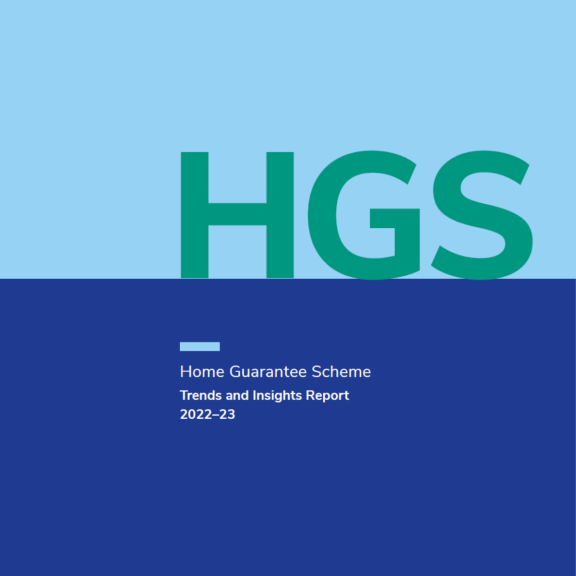Research, Data and Analytics
Supporting Housing Australia through a research, data and analytics capability
The National Housing Finance and Investment Corporation (NHFIC) today released its fourth annual Home Guarantee Scheme (HGS) Trends & Insights Report, covering data on the First Home Guarantee (FHBG), Family Home Guarantee (FHG) and Regional First Home Buyer Guarantee (RFHBG) for 2022-23.

The National Housing Finance and Investment Corporation (NHFIC) today released its fourth annual Home Guarantee Scheme (HGS) Trends & Insights Report, covering data on the First Home Guarantee (FHBG), Family Home Guarantee (FHG) and Regional First Home Buyer Guarantee (RFHBG) for 2022-23.

The National Housing Finance and Investment Corporation (NHFIC) today released its second data collaboration with the Commonwealth Bank (CBA) looking at trends and insights across the CBA first home buyer market.

This paper looks at the evidence regarding international private capital flows into subsidised housing based on available data. It also includes takeaways from extensive interviews undertaken with local and international investors on investment barriers and enablers, while it also analyses recent private capital trends through a range of case studies, with the focus on the United Kingdom and the United States where there is more available data, but also Canada and some select European countries.

In 2022, the Community Housing Industry Association (CHIA) commissioned a standard tool for measuring, managing, reporting and interpreting community impact generated by the Australian community housing sector with the support of NHFIC and other partners. The result is the first edition of the ESG Reporting Standard for Australian community housing, developed for, and by, the sector.
NHFIC is proud to support the ESG Reporting Standard and partner with CHIA to promote a better understanding of the value that well-built and managed social and affordable rental housing can bring to the community and the economy. This initiative will encourage deeper investor interest, providing further foundations to build social and affordable housing as a viable asset class in Australia.
To find out more about the reporting standard and download a copy the report, click here.

Around 31 per cent or nearly 3 million households in Australia are renters, with 26 per cent of households renting from private landlords and 3 per cent of households renting from state or territory housing authorities. Changes in the rental market are important because they typically accommodate lower income earners who are more vulnerable to experiencing housing stress. The COVID-19 pandemic period has had a substantial impact on Australia’s rental markets, with vacancy rates now at low levels in most cities and regions. There has also been an unusually high degree of variance in rental markets due to specific local demand and supply drivers.

This is NHFIC's third annual First Home Loan Deposit Scheme (FHLDS) Trends & Insights Report, covering data on the FHLDS, New Home Guarantee (NHG) and Family Home Guarantee (FHG) for 2021–22.
The FHLDS, NHG and FHG are Australian Government initiatives to support eligible home buyers purchase a home sooner. Collectively these initiatives are referred to as the First Home Loan Deposit Scheme (Scheme). On 1 July 2022 these initiatives were brought under the new Home Guarantee Scheme (HGS).

First home buyers are individuals and households that are entering the home ownership market by purchasing a property for the first time. The number and share of first home buyers in the market is often used as an indication of the strength and affordability of the overall home buying market, making it an important area of research.
The Home Guarantee Scheme is an Australian Government initiatives to support eligible home buyers purchase a home sooner. Data generated from the Scheme allows NHFIC to generate unique insights into the first home buyer market.
Insights from NHFIC’s proprietary HGS data is covered in this section.
Use the interactive map below to see statistics on all guarantees that were offered and issued to home buyers under the Home Guarantee Scheme between 1 July 2021 and 30 June 2022. Data shown is as at 30 June 2022.
Search by postcode or local government area (LGA) and click on the map to view key information.
